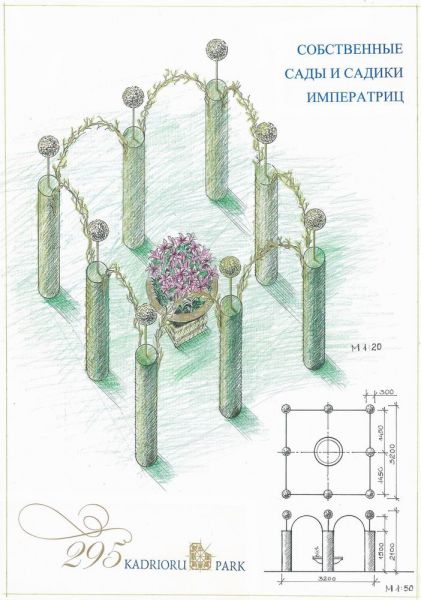|
|
Candore omnia vincit - Purity conquers all

Annotation
The project is timed to coincide with the 295th anniversary of the founding of Kadriorg Park – the most celebrated park in Estonia.
At the time of its creation, the park spanned an area measuring roughly 100 hectares. A relatively small area of the park was set aside for the planting of a lush Italian-French formal garden, while the remaining grounds preserved the natural landscape with its meadows and fields, along which the park’s foothpaths were laid.
In order to accelerate the process of park formation, it was decided to transplant mature trees. In 1717, 550 individual trees were shipped from Holland to the park, and within a year (in 1718), 429 of them were forwarded to Petersburg, where the already-acclimatized trees were planted in the city’s gardens and parks, including the Summer Garden.
For acclimatization purposes, Kadriorg Park also received shipments of chestnuts, some of which were similarly intended for subsequent forwarding to the parks of Petersburg, but with the death of Peter I, the idea was forgotten and the chestnuts remained in Kadriorg.
Unfortunately, the whole of the original Kadriorg Park has not survived to our day. One of the most popular attractions of the preserved part of the park is the symmetrical Swan Pond and the lane leading up to the palace.
Following careful study of available archival material, specialists decided to restore the park to the style of the 18th Century, including the incorporation of trimmed trees into the overall landscape. Today, only the palace garden has been restored to that style.
The landscape composition of our design is anchored by moss-filled columns made of a gold-gilt metallic grille, adorned with faux-boxwood orbs and interconnected by arches fashioned out of natural boughs.
The columns symbolize a tree quite exotic to Estonia – the chestnut, while the vaulted arches connecting the columns underscore the natural philosophy behind the architectural solution of two striking masterpieces of park art: the Summer Garden – in St. Petersburg, and Kadriorg – in Tallinn.
At the center of the composition – a vase with lilies in the shape of a fountain.
The choice of lilies was not accidental. The lily is considered a symbol of purity and royal bearing. One of the plafonds found in the Great Hall of Kadriorg Palace depicts a lily bearing an inscription of the motto “Candore omnia vincit,” or “Purity conquers all.”
The use of lilies in our composition speaks to the purity of our endeavors and the designs we strive to pursue; of the fleeting nature of time passing into non-existence and the continuity of past and present.

